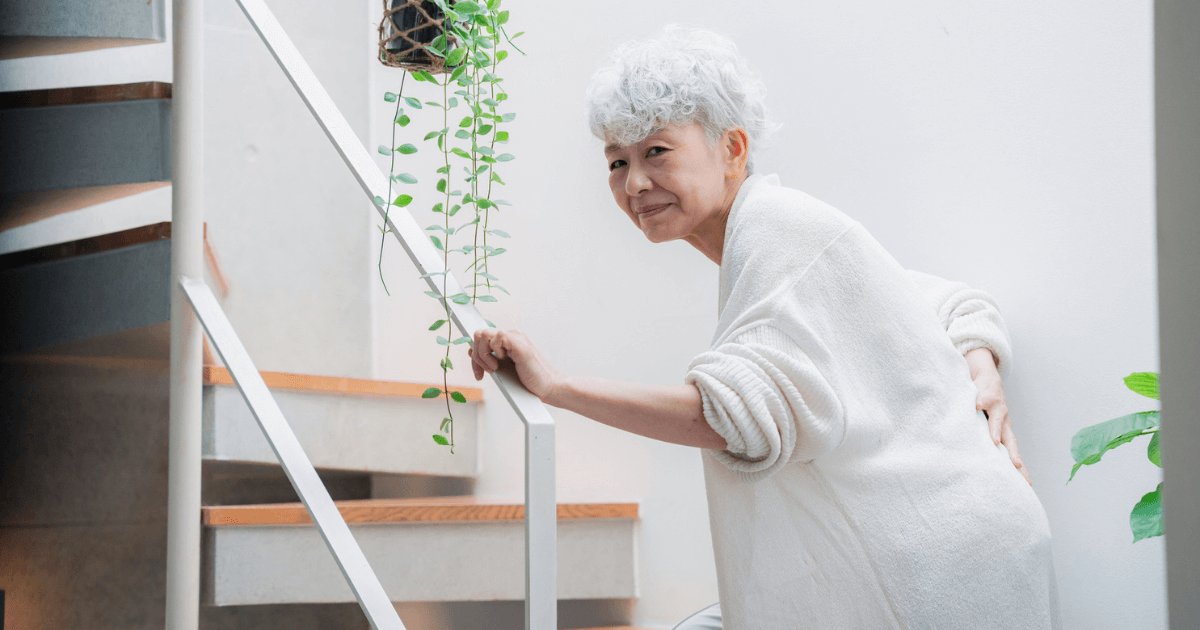The phrase “aging in place” gets thrown around quite a bit in senior living conversations, but what does it mean precisely, and how safe is your home for this purpose?
Below, we’re going to take a closer look at your living space and provide you with a simple scorecard to evaluate how age-friendly your home is. Plus, we’ll discuss some practical suggestions to make your home safer and more comfortable as you get older.
A scorecard for evaluating your home’s age-friendliness
Before we dive into improvements, let’s assess your current living situation. Grab a pen and paper, and let’s get started with a simple scorecard.
For each of the following items, give yourself a score from 1 to 5, with 1 being “needs major improvement” and 5 being “excellent.”
- Accessibility
- Bathroom
- Kitchen
- Bedroom
- Safety
- Outdoor space
- Support system
Here are somethings to keep in mind when you’re giving a rating for each item:
Accessibility
- Are all living spaces on one level or accessible by an elevator or chairlift?
- Is there at least one step-free entrance?
- Are doorways and hallways wide enough for a wheelchair or walker?
Bathroom
- Is there a grab bar near the toilet and in the shower or bath?
- Is the flooring non-slip?
- Can you access the shower or bath with ease?
Kitchen
- Are kitchen appliances, cabinets, and countertops at a comfortable height?
- Is there good lighting for cooking and meal preparation?
- Are cooking utensils and dishes within easy reach?
Bedroom
- Is your bed at a comfortable height for sitting and standing?
- Do you have a nightstand within reach?
- Are there adequate lighting and storage options?
Safety
- Are there smoke detectors and carbon monoxide alarms installed and working?
- Is your home well-lit, especially in hallways and stairs?
- Are there any tripping hazards, such as loose rugs or clutter?
Outdoor space
- Is there a safe and accessible path from your home to the outdoors?
- Do you have a comfortable seating area outside?
Support system
- Do you have access to a reliable support network or caregiver if needed?
Now, add up your scores. The closer you are to 35, the more age-friendly your home is. If your score is lower than you’d like, don’t worry; there are plenty of ways to improve your living situation.
Download our Family Decision Toolkit.
Suggestions for improving the age-friendliness of your home
Accessibility modifications: If mobility is a concern, consider installing ramps, chairlifts, or elevators to eliminate stairs. Widening doorways and hallways can also make navigating your home easier.
Bathroom safety: Invest in grab bars and non-slip mats for the bathroom. You might also consider a walk-in shower or a bathtub with a built-in seat.
Kitchen convenience: Install pull-out shelves, adjustable-height countertops, and lever-style faucet handles for easier use of the kitchen.
Bedroom comfort: Raise or lower your bed to a comfortable height for getting in and out. Add extra lighting and bedside storage for convenience.
Safety enhancements: Ensure your home is well-lit and free of tripping hazards. Address any maintenance issues promptly to prevent accidents.
Outdoor access: Create a safe and accessible path from your home to the outdoors. Consider adding handrails to outdoor steps or ramps.
Support system: Connect with local senior services or organizations that can provide assistance when needed. Having a support system in place can make a world of difference.
When improvements aren’t practical or affordable
We understand that making your home age-friendly might not always be feasible due to financial constraints or other factors. In such cases, here are some alternatives to consider:
Home sharing: Sharing your home with a roommate can provide companionship and help with daily tasks.
Senior living communities: Explore senior living communities that offer various levels of care and support.
In-home care: Consider hiring in-home caregivers or home healthcare services to assist with daily tasks.
Downsizing: Moving to a smaller, more manageable space might be a more affordable option that requires fewer modifications.
Community resources: Many communities offer transportation services, meal delivery programs, and social activities for seniors.
Remember, your safety and comfort are paramount. Don’t hesitate to reach out to local organizations or government agencies for assistance or guidance in finding the best solutions for your unique situation.
In conclusion, aging in place is a wonderful goal, and with some thoughtful modifications and support, it may be entirely achievable. Evaluate your home, make improvements where you can, and explore alternative options if necessary.
By the way, if you’re interested in exploring a move to a senior living community as an alternative to aging in place, contact one of our communities near you. Download our Family Decision Toolkit for tips on making the best senior living decision.


